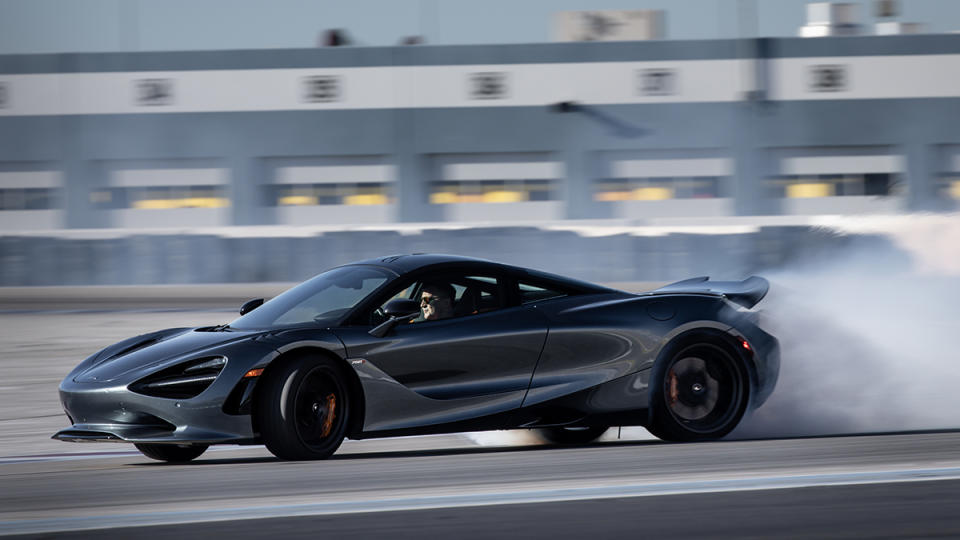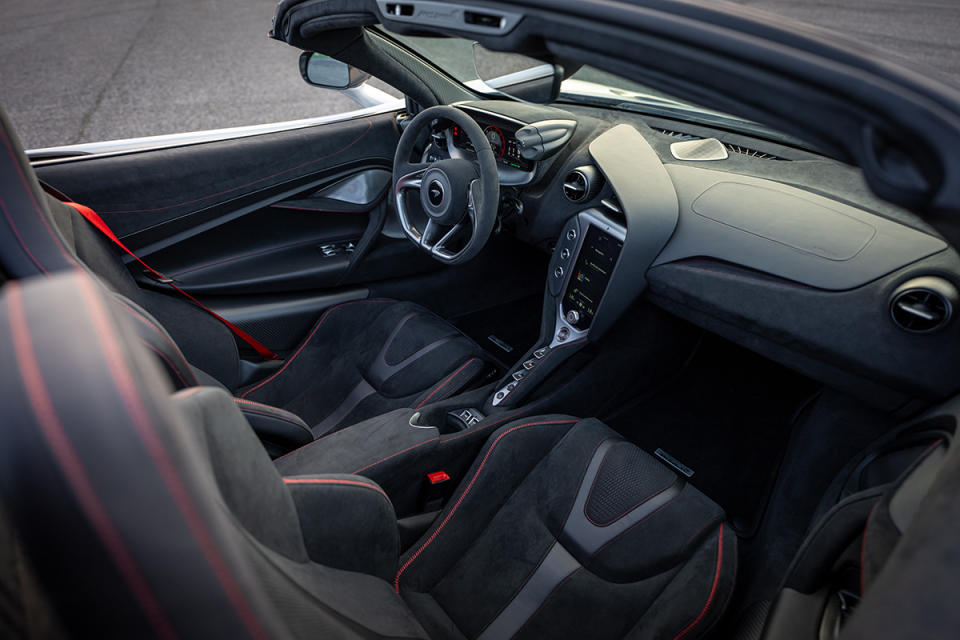First Drive: The McLaren 750S Is a Well-Mannered Supercar With a Wild Side—and Some Flaws

At first blush, the McLaren 750S doesn’t look all that new. Like an old friend with exceptional plastic surgery, the British marque’s latest model appears more taut but the underlying bone structure is still there. And it’s an impressive foundation; after all, its genes are inherited directly from the 720S.
Now, with an estimated 30 percent of the 750S being new, performance enhancements include an obligatory bump in output to 740 hp, livelier handling, and a shoutier, angrier engine.
More from Robb Report
Elon Musk's Tunnel Company Has Been Cited for 'Serious' Safety Violations
Ineos Just Unveiled a New All-Electric SUV That Can Go Anywhere
The gains are most pronounced on a closed circuit, as we experienced at Las Vegas Motor Speedway in Nevada. Quickly apparent is the vehicle’s increased muscle and shorter gearing. The twin-turbo V-8, with 590 ft lbs of torque, dumps power assertively to the rear, allowing the 2,815-pound (dry weight) car to dispatch zero to 60 mph in 2.7 seconds and barrel on to 206 mph.

Newly available—and optional—Pirelli P Zero Trofeo R tires bite hard, aided by a rear spoiler enlarged by 20 percent for increased downforce. The 750S feels surprisingly well-mannered when dialed to its Track setting; the power lays down progressively, and it’s easy to link apexes. But holding down the ESC button and simultaneously entering Dynamic mode unleashes a wilder side of this supercar, enabling abundant oversteer and smoky drifts. Also new is a feature that holds the engine at redline while braking and downshifting in manual mode, optimally priming the engine to pull the car out of corners. Counterbalancing the arsenal of go-fast tech, the optional monobloc calipers and carbon-ceramic brakes scrub 124 mph to zero in 371 feet, which is 16 feet less than required by the 720S.

There’s a bit more theatricality on tap this time around as well. McLaren has added a launch-control setting that enables more tire-smoking wheelspin, plus a transmission function that briefly cuts ignition for more pronounced shifts. Those overt flourishes won’t make you any quicker, and the model still lacks the snappy handling and alluring edginess of the 765LT. Yet just as the 720S was not without its flaws—such as a stiff brake pedal and Byzantine entertainment system—its successor leaves room for improvement, especially in the cockpit, which is as spartan as ever. And while the infotainment setup is now compatible with Apple CarPlay (though the phone still needs to be tethered to a cord), it’s not onboard with Android Auto. But a more overriding concern is McLaren’s less-than-sterling reputation for reliability, and whether or not the 750S can improve on that track record.
When considering the four models in McLaren’s current lineup—including the touring-focused GTS, the hybrid Artura, and the extreme (and extremely limited-edition) Solus GT—the 750S is the golden mean. More than just a makeover, it successfully builds on its predecessor’s versatility and breadth of capability. And with consumer adoption of electrification far from a safe bet at the moment, this is McLaren doubling down on what it expects to be a sure thing.
Best of Robb Report
Sign up for Robb Report's Newsletter. For the latest news, follow us on Facebook, Twitter, and Instagram.

